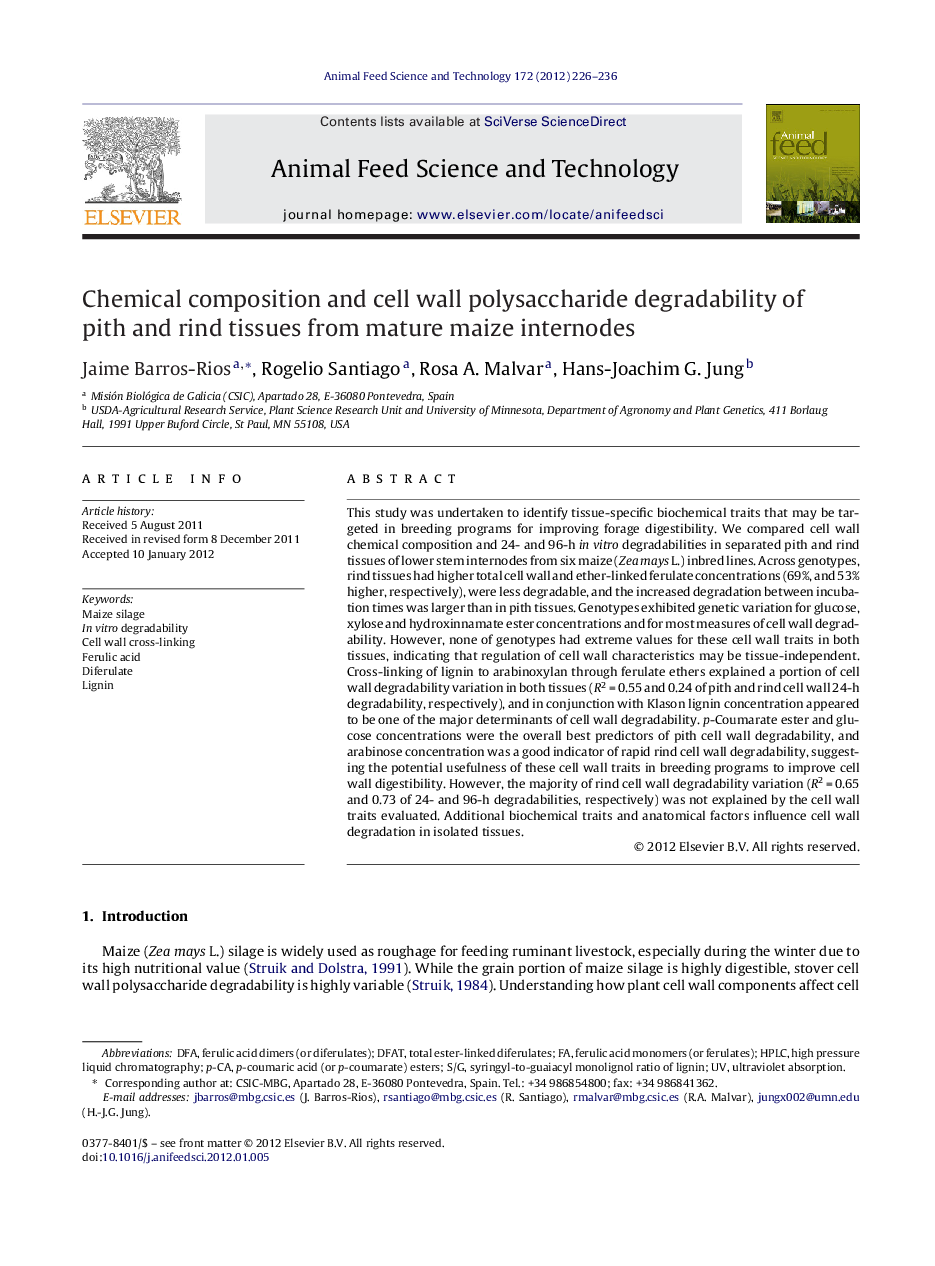| کد مقاله | کد نشریه | سال انتشار | مقاله انگلیسی | نسخه تمام متن |
|---|---|---|---|---|
| 2419798 | 1552421 | 2012 | 11 صفحه PDF | دانلود رایگان |

This study was undertaken to identify tissue-specific biochemical traits that may be targeted in breeding programs for improving forage digestibility. We compared cell wall chemical composition and 24- and 96-h in vitro degradabilities in separated pith and rind tissues of lower stem internodes from six maize (Zea mays L.) inbred lines. Across genotypes, rind tissues had higher total cell wall and ether-linked ferulate concentrations (69%, and 53% higher, respectively), were less degradable, and the increased degradation between incubation times was larger than in pith tissues. Genotypes exhibited genetic variation for glucose, xylose and hydroxinnamate ester concentrations and for most measures of cell wall degradability. However, none of genotypes had extreme values for these cell wall traits in both tissues, indicating that regulation of cell wall characteristics may be tissue-independent. Cross-linking of lignin to arabinoxylan through ferulate ethers explained a portion of cell wall degradability variation in both tissues (R2 = 0.55 and 0.24 of pith and rind cell wall 24-h degradability, respectively), and in conjunction with Klason lignin concentration appeared to be one of the major determinants of cell wall degradability. p-Coumarate ester and glucose concentrations were the overall best predictors of pith cell wall degradability, and arabinose concentration was a good indicator of rapid rind cell wall degradability, suggesting the potential usefulness of these cell wall traits in breeding programs to improve cell wall digestibility. However, the majority of rind cell wall degradability variation (R2 = 0.65 and 0.73 of 24- and 96-h degradabilities, respectively) was not explained by the cell wall traits evaluated. Additional biochemical traits and anatomical factors influence cell wall degradation in isolated tissues.
Journal: Animal Feed Science and Technology - Volume 172, Issues 3–4, 30 March 2012, Pages 226–236